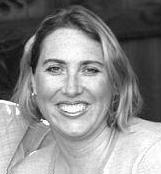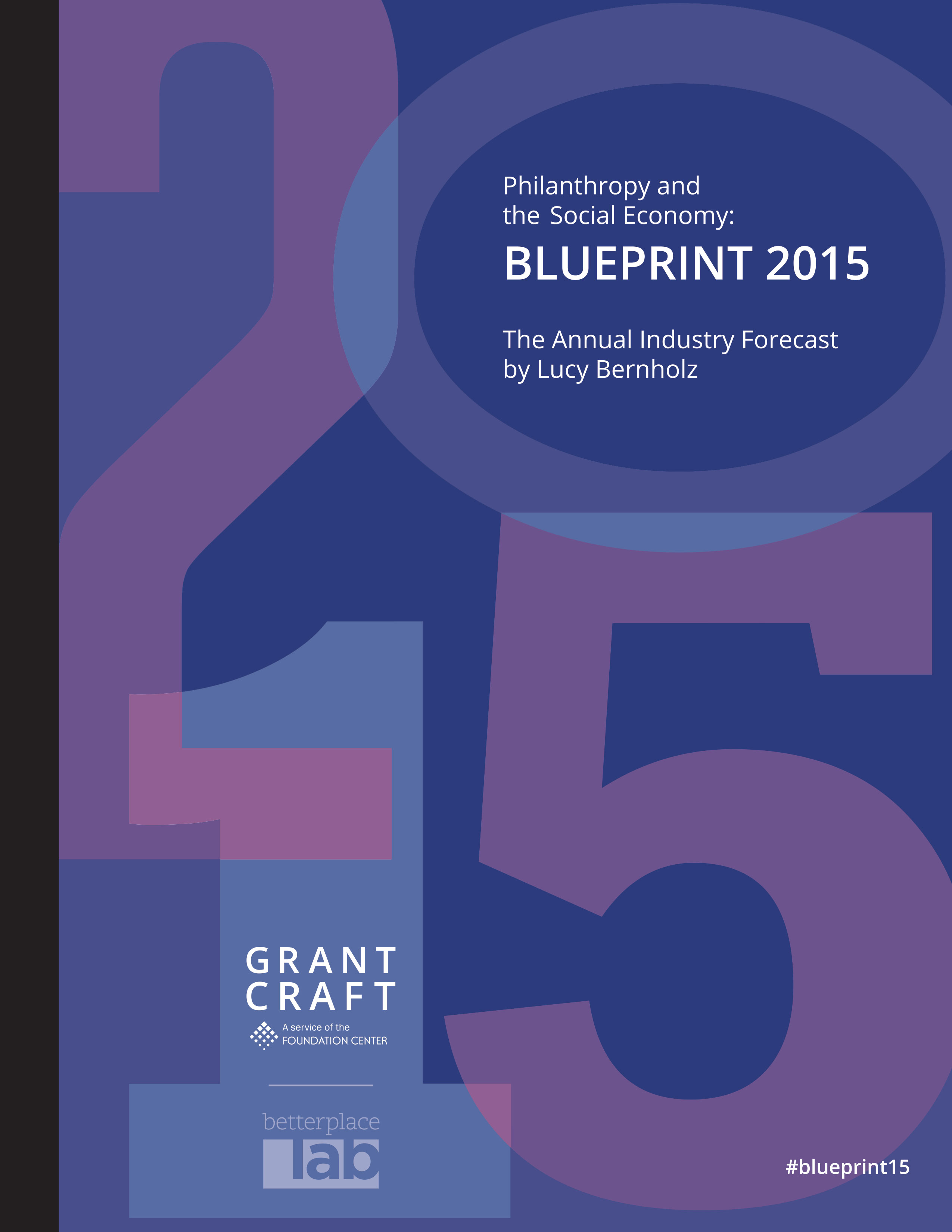Big Ideas That Matter for 2015: Are Philanthropic Organizations Ready?
One way I mark the passage of another year is the welcome arrival of the latest Blueprint — the annual industry forecast report written by Lucy Bernholz and published by GrantCraft, a service of Foundation Center. This year’s report, Philanthropy and the Social Economy: Blueprint 2015, provides us once again with a rich opportunity to look back at the past year and to ponder what’s to come in the year ahead. The Blueprint is a great marker of time and creates a moment to pause for reflection. As I read this year’s report, I found much to digest, understand, and learn. Like the five previous editions, Blueprint 2015 is provocative, and — as I settled in to read — I was humbled to discover that it brought up many more questions than answers. The report piqued my curiosity about the state of the social economy and more explicitly about organized philanthropy and how we do our work. Specifically:
Are we agile and flexible enough? Are our philanthropic organizations ready?
 The words “dynamic” and “dynamism” show up throughout the Blueprint 2015, and the pervasive thought I had while reading was that this is an exciting, creative, and expansive time for the social economy. Given this, I couldn’t help but wonder if philanthropic organizations are ready — will we be able to flex, bend, and adapt at the same pace as the change around us? Our ecosystem is evolving, moving, and reorganizing. In this time of globalization, disruptive technology, digital activism, new organizational forms, and even new language, are philanthropic organizations keeping pace? Do we have a picture of what “keeping pace” would really mean?
The words “dynamic” and “dynamism” show up throughout the Blueprint 2015, and the pervasive thought I had while reading was that this is an exciting, creative, and expansive time for the social economy. Given this, I couldn’t help but wonder if philanthropic organizations are ready — will we be able to flex, bend, and adapt at the same pace as the change around us? Our ecosystem is evolving, moving, and reorganizing. In this time of globalization, disruptive technology, digital activism, new organizational forms, and even new language, are philanthropic organizations keeping pace? Do we have a picture of what “keeping pace” would really mean?
My experience is that folks doing the work of philanthropy take their role very seriously. It’s a tremendous responsibility to be entrusted with private resources in order to create public benefit. That we take that trust seriously is a good thing. In practice, this means that we tend to be careful, we analyze everything thoroughly, and we remain deliberate, trying hard not to make mistakes. This subtle — or not so subtle — perfectionism creates a tension against our desire to also be nimble, innovative, creative, and dynamic. I wonder: how can we talk about and manage that tension? Are there times we should be using philanthropy as true risk capital, maybe leaping more and looking less? Can we be nimble enough to fail, learn, and course-correct quickly, and have that process be okay, even celebrated? It’s clear that many of the newer entrants in the social economy are working from this spirit of moment-to-moment dynamism. How can we collaborate with openness, adaptability, and readiness for change? Are we learning how to be more agile and flexible along the way?
Are the right people/skills at the table?
The other thing that struck me as I read the report is the variety of new skills and voices needed to work well within the changing social economy. We know, for example, that new technologies and digital data are emerging as important sources and byproducts for learning, innovation, and achieving results. It follows, then, that we need to make sure technology and data capacity are being fostered, used, and advanced within philanthropic organizations and across the sector. Together, we need to gain expertise as we take on challenging topics like intellectual property, open licensing, transparency, and privacy. Further, working in a digital world during this time of rapid change requires operational savvy. We need to build and maintain necessary infrastructure to execute well today, while also forging the space so we can adapt and shift easily in the future. Collectively, this is a tall order. Are we listening to the right experts to make this happen? Are we building the necessary capacity and knowledge?
As “pervasive digitization” has become the new normal, have we changed the way we think about technology and data expertise in our grantmaking? It doesn’t seem reasonable that all program officers now also need to be technology experts (though some are.) How do we make sure the technologists are being included at the right times? How can our daily work be informed by data expertise and digital best practices, and how do we successfully integrate these into our grantmaking? Bernholz notes that “technologists are becoming part of the sectors that they serve” and imagines a future where “data analysis and sensemaking skills” are integrated into strategy and grantmaking. What new understandings do we need in order to know how we will do this? And, who do we need to include in the conversation to live this out fully?
The 2015 Blueprint marks a time that is vibrant, rich, and exciting for us to be working in this sector. It also invites us to adapt, flex, and change — more than ever before. It’s not a perfect metaphor, but sometimes I find myself thinking about the proverb of the shoemaker whose children have no shoes. Those of us who work in philanthropy understand that our grantees need to adapt within changing circumstances and must constantly evolve. We know that executing well is the challenging standard we place upon grantees as we give them resources. I’m not sure we always hold ourselves to the same standard, or that we take the time to know what executing well might mean within our own changing context. Just as we offer capacity building support and technical assistance to the organizations we fund, it’s also important that we do our own capacity building work, making the necessary changes within our organizations to be effective, real-time participants in the social economy. Are we checking ourselves to make sure we have the skills, roles, knowledge, and processes needed to do that?
Our changing ecosystem will certainly require that we become comfortable with the continued blurring of lines and re-imagining of everything around us. As we strive to achieve impact and social benefit, it may mean we need to bring new people to the table, while developing new skills and new ways of working ourselves. My hope is that all of our good intentions and hard work continue to fuel the adaptability, learning, and dynamism that Bernholz points to so brilliantly.


